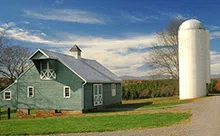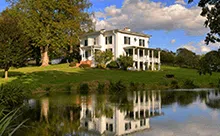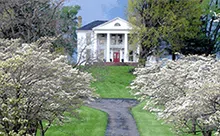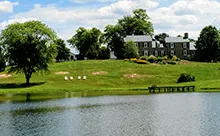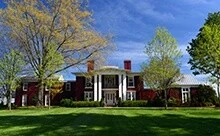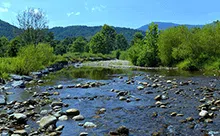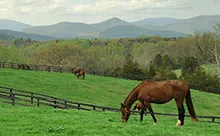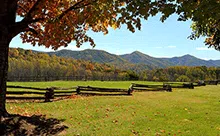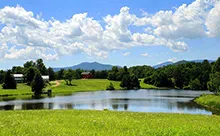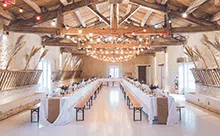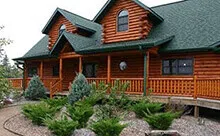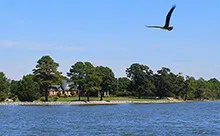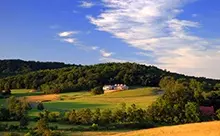home / virginia resources / charlottesville / Charlottesville History
Charlottesville History
More About Charlottesville
Charlottesville’s Rich History and Unique Culture
The Charlottesville-Albemarle region is steeped in history; more than just a plethora of museums, Charlottesville offers a dedication to the preservation of the region’s distinct traditions. By now, this rich history has become an inseparable part of the area’s unique culture. The area, once home to three of founding fathers who would become U.S. presidents, offers a unique connection between modernity and our country’s proud history.
Charlottesville has been recognized countless times for the community’s commitment to its roots, most notably as a “Distinctive Destination” by the National Trust for Historic Preservation in 2007.
The Charlottesville Area’s First Settlements
The earliest settlement in the area was an Indian village known as Monasukapanough. Pioneers and settlers followed a Monacan Indian hunting trail from the Blue Ridge Mountains to Richmond, settling near what became known as the Three Notch’d Road in present-day Charlottesville. (The section of the road which traversed Charlottesville is now the Historic Downtown Mall and East Main.)
Albemarle County was named for the second Earl of Albemarle, governor of the Virginia Colony, while Charlottesville was named for Princess Charlotte, who became queen of England after marrying George III.
By the mid-1750’s, much of the area had been claimed; Nicholas Meriwether II, great-great-grandfather of Meriwether Lewis, secured a 15,000 acre land grant along the Southwest Mountains. The grant included 1,190 acres of “The Farm” which became modern-day Charlottesville.
Jefferson’s Legacy
Thomas Jefferson, the third president of the United States and the principal author of the Virginia Statute for Religious Freedom and the Declaration of Independence, founded the University of Virginia in 1819.
Jefferson purposely built the University on the ourskirts of town in support of the agrarian basis of society, but businesses stretched towards the “Academical Village”, connecting the University with the town’s center.
These newly-developing commercial area which supported the student and faculty population became known as “The Corner”.
Charlottesville Development During the 19th Century
In 1850, Charlottesville welcomed the Louisa Railroad Company, the area’s first railroad service. Rail lines sponsored new areas of development, increased trade and manufacturing, and provided reliable communication for the area. During the Civil War, while the Charlottesville community lost its share of men and boys, the city itself was largely untouched, though it played a large role in the manufacturing of Confederate uniforms and cared for many wounded soldiers at the University hospital.
Despite the negative ramifications of the Civil War presented to the country during Reconstruction, Charlottesville development flourished. In 1887, Charlottesville received its first horse drawn street cars. An extra horse was kept at Vinegar Hill, an especially rocky section of Main Street, to assist street cars. The next year, Charlottesville annexed land surrounding the original city grid to create a city of almost 800 acres.
History in Charlottesville Today
Today, the area’s rich heritage is visible across Charlottesville, from a walk on the Historic Downtown Mall, to the commercial area known as “Barracks”, where British and German prisoners of war were kept during the American Revolution.
The area boasts the homes of three former presidents: Monticello, Montpelier, and Ash Lawn (homes of Jefferson, Madison, and Monroe, respectively), available to tour. Visitors can also experience the 18th century history at local Tavern-Museum, Michie Tavern. Just across the mountain in Staunton, visitors can tour Woodrow Wilson’s home.



















